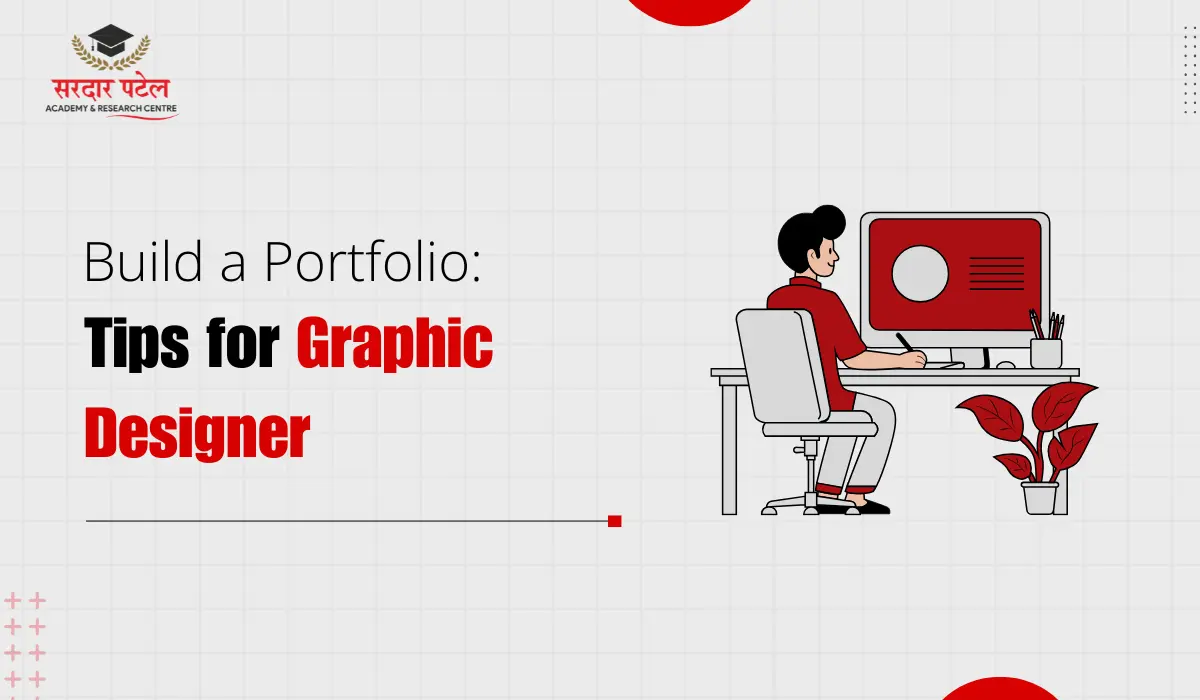
Whether you have just started your career or have already done some projects, a portfolio will become a key to having a good project. Creating a portfolio is not a tough task, it is just like preparing a technical resume for a graphic designer, unlike a normal one. A Portfolio for graphic designers is an important asset, it has to be next to you as a preparation for cracking an interview.
Let’s learn how you can merge all your big & small projects to show your new clients. In this blog, we will get to know you in detail. Why is it necessary to have a portfolio?
In this blog, we will discuss from scratch how to make the best portfolio with your appealing works. If you don’t have your portfolio ready with you, this blog will guide you through the process.
The portfolio is not a bundle of your work; it shows your skills and creativity and represents your overall work. The design and creativity should be clear and concise to make graphics appealing. Your portfolio will highlight your skills while you apply for new jobs and placements. You can join freelancing projects through your portfolio; it will add value to your normal resume and will leave the best impression on the interviewer.
Create your website : A Portfolio will not only help you find new jobs and clients. You can make your own brand for yourself, and you can make your work online available, it shows your commitment and sincerity towards your work. It will give you a chance to collaborate with big brands and increase the chance to work as an ambassador.
Building a portfolio does not mean you can add every graphic you have made to the portfolio. Value is added to a portfolio when you add quality over quantity designs, you do not need to show every graphic you have made. You should add impressive and best graphics.
Add latest projects : By adding recent projects, you show them how consistent you are with your work. Regularity shows current updates in your work and improvements you have made. It will have an impact on the client that your creativity is increasing in your work day by day.
Your Portfolio should not only show various graphic designs or the best projects you have done. You should show your experience and dealings with a client. Understand the client's perspective to meet the expectations.
Final Results : Share how your work has added value to the table for the client, like: user experience, increased sales chances and conversion rate of their brand. Share how you helped them improve brand recognition. Add every small detail that can help you get new projects from your previous projects.
Adding your first draft to the final design shows the hard work and patience you have while completing the work. This will work as a case study for you and it will give clients a view of your working style, concepts and thoughts while giving a final touch.
Add process & behind the work : You will share what were your thoughts when you started the project, and how, with new challenges, you changed your working style.
A portfolio represents you digitally or physically when you are not present at the moment. All the projects added to the portfolio need to follow proper style, typography, design and layout.
Make Your Portfolio Online : Share your portfolio online, and you will find online applications/platforms that are made for graphic designers. Preferred platforms are: Behance, Adobe Portfolio, Wix or your website. A personal website can work as a brand if you have some great work experience in the past or future, as it can become helpful.
Now your portfolio is ready, show the portfolio to your friends, mentors and industry-oriented people. The feedback from their part can show you the mistakes, you are not able to notice. Before getting feedback directly from your clients, improve mistakes with the help of mentors and friends. Improving designs will enhance your learning and skills.
A graphic design student must have a portfolio ready, as I have mentioned. It is hence proved by the research that if you have your resume prepared, you will crack an interview just by showing your resume. On the other hand, if there is no portfolio ready with you. You will behave as a nervous person and be perplexed by every small question.
When you stand with your work in hand, then a Portfolio will give you confidence to crack the interview in one go.
By following these ( tips as a graphic designer ), you can get the best portfolio out of all your comprehensive works. You will get your portfolio ready within 2-3 days if you are experienced. Or if you are new and want to start learning graphic design to make a career in it. You can read further about us, which will help to start your learning journey with the best faculty.
Sardar Patel Academy & Research Centre in Delhi will help you in making this portfolio from the basic to the advanced level by providing the best graphic design course in Delhi. Our experienced counsellors will help you clear your doubts concerning the course. Our experienced faculty will teach you design, layout, typography and other required techniques for graphic design. You will get practical classes with us at our institution. With this learning, it will be easy for you to make an appealing portfolio, which will be a cakewalk for you.
No FAQs available.